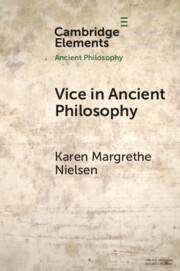45 results
29 - Non-ideal Theory and Protecting Freedom of Thought
- from Part VI - The Right to Freedom of Thought in Context
-
-
- Book:
- The Cambridge Handbook of the Right to Freedom of Thought
- Published online:
- 06 March 2025
- Print publication:
- 13 March 2025, pp 377-390
-
- Chapter
- Export citation
17 - The Ethical and Political Vision of Isaiah
- from Part IV - Afterlives of the Book of Isaiah
-
-
- Book:
- The Cambridge Companion to the Book of Isaiah
- Published online:
- 08 November 2024
- Print publication:
- 21 November 2024, pp 281-296
-
- Chapter
- Export citation
Introduction
-
- Book:
- Sustainable Development, International Law, and a Turn to African Legal Cosmologies
- Published online:
- 16 May 2024
- Print publication:
- 23 May 2024, pp 1-18
-
- Chapter
- Export citation
The “Life” of the Mind: Persons and Survival
-
- Journal:
- Cambridge Quarterly of Healthcare Ethics / Volume 33 / Issue 4 / October 2024
- Published online by Cambridge University Press:
- 08 May 2024, pp. 570-595
-
- Article
-
- You have access
- Open access
- HTML
- Export citation
Chapter 2 - The Theology of the Book of Nahum
-
- Book:
- The Theology of the Books of Nahum, Habakkuk, and Zephaniah
- Published online:
- 28 March 2024
- Print publication:
- 04 April 2024, pp 24-103
-
- Chapter
- Export citation
Chapter 3 - The Theology of the Book of Habakkuk
-
- Book:
- The Theology of the Books of Nahum, Habakkuk, and Zephaniah
- Published online:
- 28 March 2024
- Print publication:
- 04 April 2024, pp 104-172
-
- Chapter
- Export citation

The Theology of the Books of Nahum, Habakkuk, and Zephaniah
-
- Published online:
- 28 March 2024
- Print publication:
- 04 April 2024
Chapter 8 - Cultural Carriers and the Failure of Revolutionaries to Reshape Behavior
- from Part III - What Happens after Revolutionary Regime Change?
-
- Book:
- The Psychology of Revolution
- Published online:
- 07 March 2024
- Print publication:
- 14 March 2024, pp 118-132
-
- Chapter
- Export citation
It’s a Three-Ring Circus: How Morally Educative Practices Are Undermined by Institutions
-
- Journal:
- Business Ethics Quarterly / Volume 35 / Issue 1 / January 2025
- Published online by Cambridge University Press:
- 11 March 2024, pp. 1-27
- Print publication:
- January 2025
-
- Article
-
- You have access
- Open access
- HTML
- Export citation
Fear Generalization and Mnemonic Injustice
-
- Journal:
- Episteme , First View
- Published online by Cambridge University Press:
- 15 January 2024, pp. 1-27
-
- Article
-
- You have access
- Open access
- HTML
- Export citation
3 - The WTO Agreement and Justice
-
- Book:
- A Communitarian Theory of WTO Law
- Published online:
- 14 December 2023
- Print publication:
- 21 December 2023, pp 108-197
-
- Chapter
- Export citation

Vice in Ancient Philosophy
- Plato and Aristotle on Moral Ignorance and Corruption of Character
-
- Published online:
- 19 December 2023
- Print publication:
- 18 January 2024
-
- Element
- Export citation
37 - Latinx Culture and the Essay
- from Part IV - Toward the Contemporary American Essay (2000–2020)
-
-
- Book:
- The Cambridge History of the American Essay
- Published online:
- 28 March 2024
- Print publication:
- 14 December 2023, pp 627-642
-
- Chapter
- Export citation
3 - The Israel Problem and the Gentiles
-
- Book:
- Paul and the Resurrection of Israel
- Published online:
- 02 November 2023
- Print publication:
- 23 November 2023, pp 107-144
-
- Chapter
- Export citation
Introduction
-
-
- Book:
- Justice After Mao
- Published online:
- 31 August 2023
- Print publication:
- 14 September 2023, pp 1-20
-
- Chapter
- Export citation
Chapter 4 - Callicles’ Return
- from Part II - Argument and Dialogue Architecture
-
- Book:
- How Plato Writes
- Published online:
- 27 July 2023
- Print publication:
- 17 August 2023, pp 73-95
-
- Chapter
- Export citation
Chapter 12 - Injury, Injustice, and the Involuntary in the Laws
- from Part IV - Projects, Paradoxes, and Literary Registers in the Laws
-
- Book:
- How Plato Writes
- Published online:
- 27 July 2023
- Print publication:
- 17 August 2023, pp 240-250
-
- Chapter
- Export citation
Introduction
-
- Book:
- Brooding over Bloody Revenge
- Published online:
- 13 July 2023
- Print publication:
- 13 July 2023, pp 1-21
-
- Chapter
- Export citation
Conclusion
-
- Book:
- Brooding over Bloody Revenge
- Published online:
- 13 July 2023
- Print publication:
- 13 July 2023, pp 175-182
-
- Chapter
- Export citation
8 - The Practice of Good Governance
- from Part II - Texts
-
- Book:
- Medieval Muslim Mirrors for Princes
- Published online:
- 15 January 2023
- Print publication:
- 05 January 2023, pp 216-258
-
- Chapter
- Export citation

